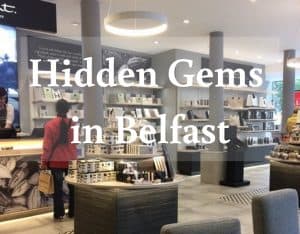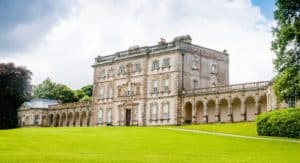The Sean-Nós Dance: The Renaissance of Ireland’s Ancient Dance Tradition

Updated On: April 16, 2024 by Maha Yassin
The Sean-nós dance, Ireland’s oldest dance form, is experiencing a modern revival, piquing the interest of dancers and cultural enthusiasts worldwide. This ancient form of expression, an integral part of Irish heritage, traces back to Ireland’s rural west and is noted for its free-form style and intricate steps. Unlike the synchronised precision of mainstream Irish step dance made famous by shows like Riverdance, sean-nós is characteristically improvised, with each dancer interpreting the music uniquely.
This revival showcases a different facet of Irish dance. It connects past and present, allowing a new generation to engage with a vital part of their cultural identity. The dance’s low-to-the-ground movements and rhythmic innovation make it a lively and expressive art form, reflective of the music it accompanies. As more people seek a connection with traditional arts, the increased interest in sean-nós has led to its re-emergence in workshops, festivals, and performances across Ireland and beyond, marking a resurgence of appreciation for this foundational cultural practice.
Historical Context of Sean-Nós
Sean-Nós dance is an intricate part of Ireland’s cultural tapestry, deeply rooted in history and tradition. Our exploration begins with its origins, moves through the influence of a global phenomenon, and concludes with its modern-day resurgence.
Origins of Sean-Nós
Sean-Nós dance, translating to “old style” in Irish, is a traditional solo Irish dance from the Connemara region. This dance form is characterised by its low-to-the-ground footwork, improvised steps, and free-flowing nature, contrasting with the more rigid style of modern Irish step dance. Sean-Nós is intertwined with Irish history and heritage, reflecting the communal essence of rural Ireland.
Influence of Riverdance
The 1994 Eurovision Song Contest interlude act, Riverdance, marked a pivotal moment for Irish dance, thrusting it onto the world stage. This spectacle of precision and athleticism ignited a global fascination with Irish culture. Riverdance’s international success, however, contrasted starkly with the understated embodiment of Sean-Nós, almost overshadowing its humble, traditional roots.
Resurgence in Modern Times
In recent years, there’s been a growing recognition of the value of Sean-Nós as a cultural gem within Ireland and beyond. Workshops, festivals, and performances have fuelled a revival, with many dancers seeking the authenticity and connection to the heritage that Sean-Nós dance offers. Its resurgence is threading the past with the present, ensuring the continuation of a rich cultural tradition for future generations.
Cultural Significance

The revival of Sean-nós dancing is a testament to our enduring connection to Ireland’s past and an expression of our living culture.
Expression of Irish Heritage
Sean-nós dancing, often performed at our Irish Centre, is more than a folk dance; it embodies Ireland’s rich cultural heritage. With its low-to-the-ground steps and improvised movements, this intricate dance form invites performers and spectators to partake in a cultural tapestry woven over centuries. It narrates stories of our past, echoing the rhythmic heartbeats of Irish music.
Sean-Nós and Irish National Identity
Our dance expresses a unique facet of our national identity, binding the community together through a shared pride in our cultural identity. The fluidity of Sean-nós allows for personal expression while honouring the unity of Irish tradition. Immersed in the deeper layers of our culture, this dance is a fervent display of our pride, creating an intimate link between our present and the ancients of Ireland who first celebrated their milestones with these very steps.
Musical Foundations
Before diving into the specifics, it’s pertinent to grasp that the musical bedrock of sean-nós is deeply rooted in Ireland’s traditional melodies and rhythms. These foundational elements breathe life into the dance form, meshing uniquely with the vibrant cultural history of Connemara.
Role of Traditional Music
Traditional Irish music serves as the heartbeat of sean-nós dance, where each melody and rhythm intricately underscores the dancer’s movements. Altan, Sharon Shannon, and Martin Hayes exemplify musicians whose work encapsulates the essence of sean-nós’ musical foundations. Their tunes, weaving through both major and minor modalities, provide the sonic landscape that dancers navigate with spontaneous footwork and nuanced gestures.
- Melody: This is characterized by an intricate simplicity that allows for expressiveness within the dance.
- Rhythm: The lifeblood that guides the improvisational nature of sean-nós steps.
Connemara’s Musical Influence
Connemara, a coastal region in the west of Ireland, imprints its musical signature, Fuaim Chonamara, onto the identity of sean-nós. Here, the rugged landscape seems to echo in the music itself—a tapestry of sound mirroring the wild, untamed spirit of the locale.
- Connemara’s Landscape: The stark beauty of this region is often mirrored in the aching pull of sean-nós melodies, enhancing the dance’s expressive power.
- Cultural Reverberation: This region’s historical context seasons the music, and thus the dance, with a depth that is felt in the bones of those who engage with it.
Through the roles of traditional music and the unmistakable imprint of Connemara, one can confidently state that sean-nós’s musical foundations are as rich and textured as the Irish heritage itself.
Technical Aspects of Sean-Nós

In this section, we’ll explore the subtleties of Sean-Nós dancing, focusing on the specifics of its footwork and improvisation that make this Irish dance form both unique and captivating.
Unique Footwork and Rhythm
Sean-Nós is celebrated for its intricate footwork and rhythmic patterns. The dancer’s feet perform a series of quick taps, cuts, and shuffles, each interacting with the music precisely yet fluidly. The footwork is often low to the ground and the movements, although seemingly effortless, require significant skill and control. Traditional tunes such as the jig, reel, and hornpipes are complemented by the dancer’s percussive beats, reflecting not only the rhythm but the melody and ornamentation of the music.
Improvisation in Performance
At the heart of Sean-Nós is its improvisational nature. Dancers are encouraged to interpret the music in their style, allowing for a personal expression that makes every performance unique. Improvisation extends to the use of space and interaction with the audience, often resulting in an intimate and reactive performance. This spontaneity, coupled with the ornamentation and percussive elements of the footwork, reveal the nuanced character of Sean-Nós dance, distinguishing it from more structured forms like Irish Step Dancing.
The Sean-Nós Dance Form
Sean-nós dance is an expressive, improvised form of traditional Irish dance, steeped in history and regional variety. It is known for its relaxed style, low-to-the-ground footwork and freeform nature.
Regional Styles and Variations
Sean-nós dance exhibits regional styles that differ from area to area in Ireland. The Connemara style, originating in Galway, tends to be a more down-to-earth and improvised form. Dancers from County Kerry might add more body movement and turns, making their dance style unique to their locale. Given its old-style tradition, each region’s take on sean-nós brings out distinctive characteristics, front and centre, allowing for a rich diversity within the dance form itself.
Comparison to Other Irish Dances
Sean-nós dance contrasts notably with other Irish dances, such as the precisely choreographed set dance and céilí. In sean-nós, arms are often relaxed or used to enhance the rhythm rather than being kept rigidly by the dancer’s side. Having a more laid-back and freeform expression, sean-nós dancers do not wear the stylised dance clothing typical of stepdancing, where high kicks and more formalised movements are the norm. This makes sean-nós not just a facet of Irish culture but a testament to the individuality and improvisational spirit within the broader tapestry of traditional Irish dance.
Learning and Practice

In the resurgence of sean-nós dance, we have recognised that structured yet flexible learning environments are key. Through workshops and community engagement, students of all ages discover this expressive art form.
Sean-Nós Dance Workshops
Sean-nós dance workshops provide practical, hands-on learning from experienced dancers. Sessions typically focus on the improvisational nature of sean-nós, emphasising individual expression within the dance. They cater to all levels, from beginners taking their first steps to advanced dancers enhancing their technique. By participating, practitioners learn the close-to-the-floor footwork and playful interaction with musicians, characteristic of the style.
Community and Student Engagement
Student engagement in sean-nós is deeply intertwined with the community. Local gatherings and events allow dancers to practice and share their skills. Engaging with the community enriches the learning experience and helps preserve the tradition by passing it down through generations. It’s a collective effort—engagement from the community inspires students, and their learning, in turn, invigorates the community.
Performance and Competition
In the realm of Sean-Nós dancing, competitions not only showcase the talent but also maintain and invigorate the tradition, infusing it with a sense of joy and immersive expression.
The Role of Competitions
Competitions are a cornerstone of Sean-Nós revival, keeping the dance form vibrant and dynamic. They offer dancers a platform to express their individuality and skill, often highlighting the deep emotional connection between the performer and their craft. A notable example is the Oireachtas na Gaeilge Festival, which emphasizes the artistic value of Sean-Nós through structured adjudication. This competitive environment enriches the tradition, as each dancer brings their unique rhythm and style to the stage.
Sean-Nós on the Global Stage
Sean-Nós has transcended Irish borders, resonating with audiences worldwide. Performances often occur in diverse venues, from intimate local Irish pubs to prominent international festivals, amplifying the dance’s reach. A resurgence of interest was partially spurred by media exposure like Sean-nós dance revival videos, showcasing the form’s raw, infectious energy. Through both live performances and online platforms, Sean-Nós captivates global audiences, spreading the infectious joy and profound emotion intrinsic to the dance.
Sean-Nós Across Borders

As enthusiasts of Ireland’s rich cultural heritage, we’ve witnessed the remarkable journey of sean-nós dance as it transcends Irish borders, touching hearts and inspiring feet worldwide. Its raw and improvised nature appeals to a global audience, fostering a sense of unity through rhythm and expression.
Impact in the US
In the US, the informal and intimate style of sean-nós dance has captured the imagination of dance aficionados. Cities like New York have embraced sean-nós passionately, integrating it into the bustling tapestry of the urban art scene. Our own experiences resonate with the accounts that describe sean-nós as an evolving form that adapts to American cities’ diverse energies. For example, the dance taking a foothold in NYC reflects this blending of tradition and innovation.
Global Appreciation
The allure of sean-nós has reached far beyond the US, with dancers and musicians in places like Japan also finding a deep connection to this traditional form. Sean-nós is a testament to the unity traditional arts can create worldwide. Through platforms that explore cultural diversity like Connolly Cove, the essence of sean-nós and other traditional Irish arts receive in-depth exploration, garnering appreciation from a global audience. These platforms are crucial in nurturing the dance form’s presence globally, guiding a new generation of performers and enthusiasts across various cultures and backgrounds.
Notable Figures and Contributions
The revitalisation of sean-nós dance owes a great deal to select individuals and groups whose dedication and talent have brought this traditional Irish dance form back to cultural consciousness.
Influential Sean-Nós Dancers
Brian Cunningham is often recognised for popularising sean-nós throughout Ireland and beyond. Hailing from the renowned Cunningham family, his energetic and intricate footwork showcases the essential elements of sean-nós dance. His performances, both as a solo artist and with his family, encapsulate the expressive, impromptu nature of sean-nós that contrasts with more structured Irish dances.
While widely known for his sean-nós singing, Joe Heaney contributed significantly to the dance form. His representation of the Connemara style emphasised the subtlety and intimacy of the dance, reinforcing the connection between sean-nós dance, music, and the Irish language.
Kieran Jordan offers another perspective on the legacy of sean-nós with her innovative approach that marries traditional steps with contemporary interpretations. Her commitment to teaching and performing has been instrumental in sean-nós dance, gaining new audiences and enthusiasts worldwide.
Revival Proponents
“Atlantic Steps” is the brainchild of the aforementioned Brian Cunningham and further encapsulates the essence of sean-nós dance. This stage show extends the reach of traditional Irish dance, blending the raw, grounded movements of sean-nós with storytelling, thereby capturing the spirit of Ireland’s west coast.
The ongoing revival also greatly benefits from the efforts of instructors and performers around the globe. Through workshops, classes, and performances, they keep the art form thriving and ensure its techniques and ethos are passed on to new generations. These proponents are the bedrock of the sean-nós dance community, nurturing growth and fostering an appreciation for this rich cultural expression.
Preservation and Legacy

In the spirit of preserving Ireland’s oldest dance form, we focus on the systematic documentation of Sean-Nós and its enduring influence on the future of traditional Irish dance.
Archiving Sean-Nós History
We recognise the importance of archiving Sean-Nós to maintain the dance’s authenticity. By cataloguing historical records and eyewitness accounts, we safeguard the rich tapestry of this tradition for future generations. Archiving involves collecting and conserving varied forms of media, from video recordings of performances at festivals to written testimonials that share the dance’s personal stories and cultural contexts.
Future of Traditional Irish Dance
Sean-Nós’s future is a testament to the dance’s resilience and adaptation. Initiatives to teach Sean-Nós in schools and incorporate the Irish language in performances are vital for cultural preservation. We see its legacy unfold at local and international dance events, ensuring Sean-Nós remains relevant and celebrated. The growth of organisations dedicated to Irish dance and the ongoing participation in Sean-Nós dance taking centre stage demonstrates how this art form continues to echo through the ages.
Frequently Asked Questions

In this section, we’ve gathered some of the most common queries about the Sean-nós dance revival and attempted to give direct and informative answers.
What are the defining characteristics of Sean-nós dance?
Sean-nós dancing is an expressive, improvised style of Irish dance characterised by its free movement, low-to-the-ground footwork, and a focus on the rhythm rather than the height of steps. It allows for individuality, where dancers might use the entire floor and are not required to use arm movements.
Can you describe the historical development of Sean-nós dancing in Ireland?
Sean-nós dancing originates in rural Ireland, which has a rich history as a communal and social dance form. It was traditionally performed to live music in homes or at small gatherings. The dance form was passed down orally, often within families, reinforcing its improvisational nature.
How does Sean-nós dance differ from other forms of traditional Irish dance, such as Ceili?
Sean-nós dance is a solo dance form known for its subtlety, earthiness, and improvisation, while Ceili dancing is a group dance with structured and repeated patterns. Ceili dances are executed with precise movements and coordination among the dancers, contrasting the freestyle nature of Sean-nós.
In what ways has Irish dancing, particularly Sean-nós, evolved in America?
In America, Sean-nós dance has been embraced and adopted, leading to a growth in its popularity. It’s often infused with other dance forms and adapted innovatively, with workshops and performances showcasing its adaptability and appeal beyond its Irish roots.
What distinguishes Sean-nós singing from other Irish folk music traditions?
Sean-nós singing is a highly ornamented, unaccompanied style of singing in Irish, distinguished by its free rhythm and emotive delivery. Unlike other Irish folk music, which can be accompanied by instruments and follow a set rhythm, Sean-nós singing is more about the storytelling and expressiveness of the singer’s voice.
Are there notable differences in technique between Sean-nós dance and what is commonly known as Irish tap dancing?
The technique in Sean-nós dance is focused on a relaxed, low-to-ground style with a fluid upper body, contrasting the rigid posture and precision of Irish tap dancing, commonly associated with shows like Riverdance. Sean-nós allows for more personal expression and improvisation than the synchronised and choreographed patterns in Irish tap dancing.






